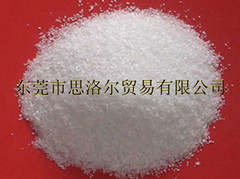Viscosity and detection method of sand surface coating
Viscosity of sand coating
The fluid moves and deforms under the action of external force. When the viscosity is used, the fluid resists the measurement of the internal resistance of the fluid, which is also called the internal friction coefficient. Viscosity is indicated by the wallpaper applied to the external force of the fluid and the velocity gradient of the attack. External forces have shear and tensile forces, shear stress and shear rate wallpaper become shear viscosity, commonly known as dynamic viscosity, and the international unit is Pa·s (Pa·s). The ratio of dynamic viscosity to density becomes the kinematic viscosity in meters per second (m2/s).
Fluid activities are divided into Newtonian and non-Newtonian. Newtonian activity is the constant value of viscosity (ratio of shear stress to shear rate) over a wide range of shear rates at a given temperature. The viscosity of non-Newtonian fluids is altered as a function of shear stress. Following the addition of shear stress, the fluid with a decreasing viscosity value becomes a pseudoplastic fluid; the shear stress is added, and the viscosity value is added to become the swelling fluid; if it is necessary to apply a certain shear stress in the event of fluid activity, it is necessary to apply a certain shear stress. The degree of addition is also referred to as the inflated fluid; if it is necessary to apply a certain shear stress in the event of fluid activity. Below this yield, the fluid can only deform into a plastic fluid. The viscosity of a non-Newtonian fluid generally becomes an apparent (current) viscosity. This viscosity value is only associated with a shear rate when the viscosity of the sand flour is apparent, and different viscosity values are exhibited at different shear rates.
In addition to solvent-based varnishes and low-viscosity paints, liquid paints are attributed to Newtonian fluids. Most paints are classified as pseudoplastic fluids or plastic fluids in non-Newtonian types. Therefore, their viscosity values are their appearance. Viscosity. Thick paste paints such as Nizi used to call the paint viscosity as consistency, indicating its activity.
Liquid coatings, especially those with high density of pigments, generally adhere to higher viscosity values for long-term storage in containers, which is the original viscosity of the coating. During the construction, it is necessary to adjust the viscosity to a lower viscosity to meet the needs of different construction methods. This is the viscosity of the construction.
There are many ways to test the viscosity of liquid coatings. If you want to apply them to different types, you should use the direct comparison method. The viscosity of the low-viscosity sand surface pink paint of the bright varnish is mainly based on the outflow method, and the viscosity detection when the resin is composed of the bright varnish and the solvent method also uses the bubble removal and falling ball method. High-viscosity paints are measured by measuring the stress at different shear rates, and together with other rheological properties of the liquid.




